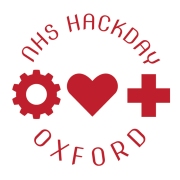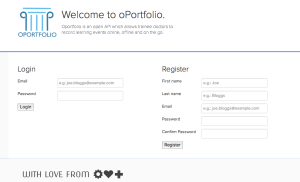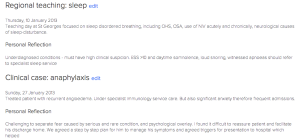This weekend I was at NHS Hackday. Doctors, other healthcare workers, students, patients, organisations and software developers came together in their free time to make stuff that could make the NHS better.
I was astounded by the last Hackday. I didn’t think my expectations could be surpassed. They were.
The projects were diverse, aiming to solve everyday problems at all levels of the NHS. You can see the list on the Google doc and they’ll be on the wiki soon. The highly deserved winner was OpenHeart. The team used the amazing open source electronic health record at Moorfields Hospital, Open Eyes, and adapted it for use in Cardiology. The end result was stunning. It will save hours of doctors’ time, will create patient records that are much more understandable for patients themselves and for GPs, and will improve communication and therefore the quality of care.
Another favourite was Dementia scrapbook, an app to allow family and friends to contribute to a virtual scrapbook of memories and reminders. It has an easy to use touch interface that can be used by carers or people with dementia themselves. Dementia is common and this takes a very patient-centred approach to solving problems many of us may face in the future. I hope to see it available soon on the app store.
Cellcountr, initially hacked at the Liverpool hackday, was built on with additional features such as data visualisation and a customisable keyboard. It will be launched in the next month at a Pathology conference, and will then make a real difference to doctors, and their ability to accurately diagnosis patients with haematological conditions.
So what did we do? We created oPortfolio, an open API which allows trainee doctors to record learning events online, offline and on the go. It includes a webapp, a mobile-friendly site, an iPhone app, and an android app that all synch data. From nothing to all this in 36 hours! The team were incredible: full of talent, patience, and creativity.
What does it do?
It solves an immediate need to log learning events on the go (see examples below). It lays the foundation for a more complex system to log assessments and meetings. With (quite a bit) more work it could be a simple open portfolio that doctors who are not currently in a training programme (eg LATs, people doing fellow jobs in between F2 and speciality training) could use to track their professional development. The funding model would have to be clarified as development and hosting is not free! It could also be an arena to experiment with and showcase new ways of organising a professional portfolio that could usefully feed into the debate on what and who a portfolio is for. It could highlight how different systems talking to each other and 3rd party apps and plug-ins have the potential to improve a core product. Another fabulous creation was Quicklog, an app to log personal development in performing procedures on the go. They built in data visualisation to encourage reflection and chart progress. It would be fantastic if the data from Quicklog could be integrated into a portfolio system. Anyone who is interested (and understands it!) should look at the code on github for oPortfolio and Quicklog!
What does it not do?
It is not a replacement for the current ePortfolio system(s). The NES ePortfolio and others (eg surgical portfolio) are complex structures build up over years, with thousands and thousands of pounds of investment. Many have questioned whether they are value for money and I can’t answer that but good software does cost. Existing systems have layers of access rights and methods of data extraction since these were priorities for the bodies who paid for them. They have cloud hosting and data security. People have spent years making them do what they do and it would be crazy to think they could be replicated in a weekend. They have their problems and must be improved but they are here to stay until a better alternative exists.
The focus of building a model Oportfolio was the user experience. If it was developed further it could fulfil a need for trainees who are not in a current training programme, who currently use various cobbled together documents on Evernote, phone notes apps, word documents and paper to record their learning and showcase their achievements when applying for jobs. With regular end-user input it could be beautiful, and a joy to use!
I am sure that our exploits this weekend will appear highly challenging and controversial to some. But I am not controversial. I have always highlighted the frustrations felt by trainees (which are well known) but advocated for engagement with all interested parties: individual trainees, trainers/educational supervisors, LETBs, Trusts, Royal Colleges, current ePortfolio provider NES, the GMC and HEE. We need to get our heads together and think about what the future of training will look like, what tools are needed to enhance learning, and how they will be funded.
The NHS can’t keep putting up with unintuitive, inflexible IT that doesn’t match the realities of practice. As demonstrated at NHS Hackday; intelligence, enthusiasm, creativity, a few humous sandwiches and some coffee can create magic. But that magic needs support and investment to make it sustainable. Muir Gray says change in the NHS will come from the bottom up. He is one of a few inspirational people at the top supporting projects in which frontline staff make a difference. We could do with a few more like him….







